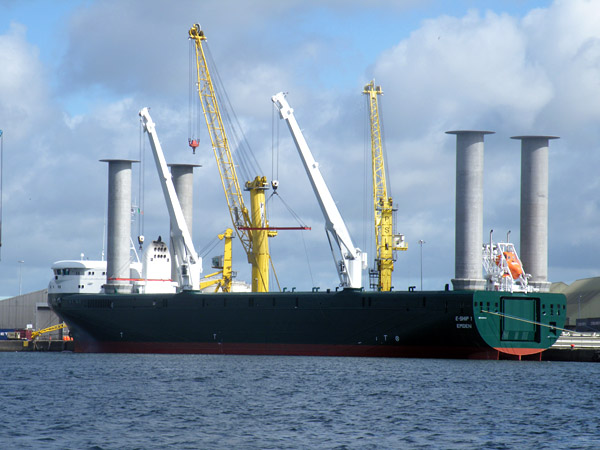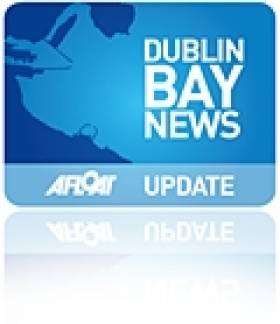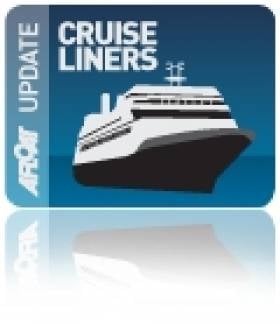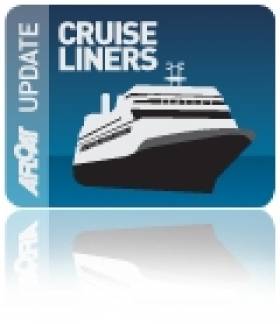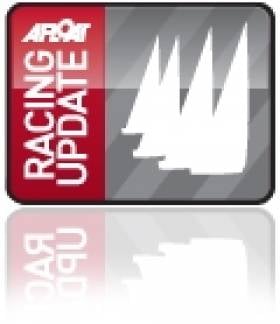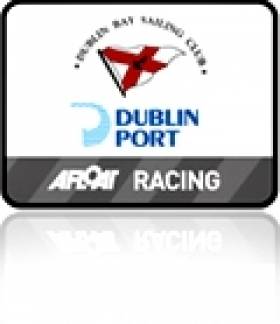Displaying items by tag: Dublin Port
Honouring Sean 'Dublin Bay' Loftus
The Big One: Azura Cruises into Dublin
As the cruise season draws to a close, the Azura, the largest cruise-ship (116,000 gross registered tonnes) to call at Dublin, docked this morning at the port for the third time this year, writes Jehan Ashmore.
A unique feature is the huge 20-metre plasma screen video wall mounted on an after bulkhead. In addition the venue is used to broadcast major sporting events. The Sea Screen outdoor cinema is the first of its kind in the P&O Cruises fleet as is the novelty of passengers having an option of
single stateroom accommodation.
Azura is one of 12 vessels eminating from the 'Grand' class vessels built for Miami based Carnival Cruise Corporation which includes P&O Cruises and Princess Cruises. The leadship, Grand Princess became the first of the class to call at Dublin in 2004 and also had the distinction as the first cruiseship to surpass the 100,000gt mark to dock at the port. Last month, another near-sister, Emerald Princess, measuring 113,000grt called to Dublin.
In total there will be 86 cruise ships visiting Dublin this year, marking another record-breaking season. The sector is expected to generate €35-€55m to the local economy from approximately 80,000 high-spending passengers.
The Azura departs Dublin tonight at 21.15hrs for Cork, where the giant vessel is to berth at the Cobh Cruise Terminal. There will be off-season cruise-calls to the capital next month by Ocean Countess and Norwegian Sun, arriving from Belfast on 2 October. The last cruise-caller to Dublin this year will
be Fred Olsen Cruises Boudicca with two visits in November.
Graceful Lady Liner to Visit Dublin
The vessel was launched as Port Sydney in 1955 from Swan Hunter and Wigham Richardson Yards, Wallsend-on-Tyne for Port Line, a subsidiary of Cunard Line. With five cargo holds, the vessel served both the meat trade and carried passengers on liner-route services between the UK and New Zealand and Australia via the Panama Canal.
In 1974, Port Sydney underwent a radical conversion into a luxury passenger cruise ship, despite the exterior appearance the vessel retains a pleasant profile compared to many modern cruiseships. Over the decades the vessel had different owners and several vessel name changes; Daphne, Switzerland and Ocean Monarch.
The most refit was in 2008 and the ship still retains the largest cabins found on any cruise ship today, of the 241 cabins. With spacious cabins for only 550 passengers and attractive appointed public areas and wide exterior decks, the veteran provides a form of cruising that would appeal to classic cruise aficionados around the world.
With a strong and sturdy hull, the vessel has a deep draft which is well suited to an ocean going vessel in handling inclement weather, though the large draft does restrict visiting certain ports and anchorage locations.
Sistership, Princess Danae, formerly Port Melbourne, was also built in 1955 with the second newbuild ordered to the famous Belfast shipbuilders, Harland & Wolff. Princess Danae is slightly smaller at 15,833grt and also made a recent call in Dublin. The sisters form part of a six vessel fleet operated by Classic International Cruises.
Princess Daphne is due to arrive in Dublin after an overnight passage from Plymouth, docking at 08.00 and depart the capital at 17.45hrs. In addition the port expects another cruise-call tomorrow in the form of Prinsendam of 37,983 grt and with over a 800-passenger capacity. The Dutch flagged vessel is operated by Holland America Line and is due to dock around mid-moring and depart at 23.30hrs.
Fitzpatrick and McDonald Win Inaugural Liffey Skiffy
Crashes and capsizes were on order for spectators from the first start with Ed Butler and Dermot Mc Murrough suffering a mainsail tear from the first start. Nin O'Leary also made the most of a capsize by back flipping from the boats wing once semi turtle! Many photos were made available from the event with the most notable making the front page of Saturday's Irish Times newspaper!
Many thanks go to the event sponsors OnBoard Surf Snow Sail, PR Reilly Car accessories as well as Dublin Port Company, Dublin Docklands Authority, The National YC, St. Patricks Rowing Club and the International 49er Class Association.

Action on the Liffey. Photo: Harry Hermon
Beneteau 31.7 'Magic' Wins Last DBSC Thursday Race
BENETEAU 31.7 - 1. Magic (D.O'Sullivan/D.Espey), 2. Prospect (Chris Johnston), 3. Thirty Something (Gerry Jones et al)
BENETEAU 31.7 Echo- 1. Prospect (Chris Johnston), 2. Magic (D.O'Sullivan/D.Espey), 3. Fiddly Bits (Kevin Byrne et al)
CRUISERS 0 Echo - 1. Tsunami (Vincent Farrell), 2. Lively Lady (Derek Martin), 3. WOW (George Sisk)
CRUISERS 0 - 1. WOW (George Sisk), 2. Tsunami (Vincent Farrell), 3. Lively Lady (Derek Martin)
CRUISERS 1 Echo - 1. Jalapeno (Dermod Baker et al), 2. Rollercoaster (C&P Power-Smith), 3. Raptor (D.Hewitt et al)
CRUISERS 1 - 1. Jalapeno (Dermod Baker et al), 2. Joker 11 (John Maybury), 3. Rollercoaster (C&P Power-Smith)
CRUISERS 2 Echo - 1. Borraine (Ean Pugh), 2. Free Spirit (John O'Reilly), 3. Bendemeer (Gerald Kinsella)
CRUISERS 2 - 1. Red Rhum (J Nicholson), 2. Jawesome 11 (V.Kennedy/M.Dyke), 3. Peridot (Jim McCann et al)
CRUISERS 3 - 1. Hard on Port (Flor O'Driscoll), 2. Supernova (K.Lawless et al), 3. Two Step (Ross Doyle)
CRUISERS 3 Echo - 1. Papytoo (M.Walsh/F.Guilfoyle), 2. Jabiru (M & S Renwick), 3. Vespucci (S & C O'Regan)
CRUISERS 4 - 1. Ghrazel (Charles Pearson), 2. Maranda (Myles Kelly), 3. Aslana (J.Martin/B.Mulkeen)
DRAGON - 1. Phantom (D.Williams/P.Bowring), 2. Zu (P.Dee et al), 3. Diva (R.Johnson/R.Goodbody)
FLYING FIFTEEN - 1. Fifty Somethings (David Mulvin), 2. Snow White (Frank Burgess), 3. Deranged (C.Doorly)
GLEN - 1. Glendun (B.Denham et al), 2. Glenmarissa (F.Elmes/W.Higgins), 3. Glenshesk (L.Faulkner et al)
RUFFIAN 23 - 1. Cresendo (L Balfe), 2. Ruff Nuff (D & C Mitchell), 3. Ruffles (Michael Cutliffe)
SB3s - 1. Blue Bird (Cathy McAleavy), 2. Bad-Kilcullen (J.Dowling), 3. Alert Packaging (Justin Burke)
SHIPMAN - 1. Malindi (B.Smith/A.Gray), 2. Whiterock (Henry Robinson), 3. Therapi (Alan McCarthy et al)
SIGMA 33 - 1. White Mischief (Timothy Goodbody), 2. Rupert (R.Lovegrove/P.Varian), 3. Gwili Two (D.Clarke/P.Maguire)
SQUIB - 1. Why Not (Derek & Jean Jago), 2. Anemos (Pete & Ann Evans), 3. Chillax (Mary McLoughlin)
WHITE SAIL CRUISERS Echo - 1. Coumeenole (Bill Kavanagh), 2. Albireo (Michael Murphy), 3. Teal (Ian French)
WHITE SAIL CRUISERS - 1. Arwen (Philip O'Dwyer), 2. Calypso (Howard Knott), 3. Nauti-Gal (J & J Crawford)
Revolutionary Rotor-Ship Returns To Dublin
State-of-the-art revolutionary rotor-ship E-Ship 1 docked in Dublin Port for the second time on 21 August after a voyage from Emden, Germany writes Jehan Ashmore.
The previous week the 'green' energy concept vessel completed the same route and notably on a maiden commercial voyage to Dublin. Onboard that inaugural voyage to the capital was a cargo of wind-turbines, tower parts and blades for the Castledockrell Wind Farm, currently under construction in Co Wexford.
The newbuild German vessel has four 25-metre high rotating cyclinder towers positioned fore and aft, that enable the vessel to harness wind energy. The rotors act as "sails" to assist propulsion of the 12,810 gross tonnes vessel and in which reduces fuel consumption significantly and lessens the impact of CO2 emissions.
The rotor technology is derived from a principle known as the Magnus Effect. This invention was further adapted in 1925 when the Fletter-Rotor ship set sail. The experimental voyage proved a success though not enough to convince the shipping industry as conventional engine plants remained efficient and the cost of fuel was low.
E-Ship 1's second port-call to Dublin was to deliver another consignment for the Co. Wexford based wind-farm project. The componants are manufactured by Enercon GmBH, the German company which also commissioned the E-Ship 1. The vessel incorporates many innovative designs derived from the wind-technology sector.

E-Ship 1 arriving from Emden on only the second call to Dublin Port on 21 August. Photo Jehan Ashmore/ShipSNAPS
Cor Baby Beats Borraine in Cruisers Two Dublin Bay Race
CRUISERS 1 - 1. Indecision (Declan Hayes et al), 2. Powder Monkey (C.Moore/M.Byrne), 3. Something Else (J.Hall et al)
CRUISERS 2 - 1. Cor Baby (Keith Kiernan et al), 2. Borraine (Ean Pugh), 3. Red Rhum (J Nicholson)
CRUISERS 3 - 1. Wynward (Wyn McCormack), 2. Chouskikou (R.Sheehan/R.Hickey), 3. Pamafe (Michael Costello)
CRUISERS 4 - 1. Maranda (Myles Kelly), 2. Aslana (J.Martin/B.Mulkeen), 3. Artemis (J.Giles)
FIREBALL - 1. Blind Squirrel (Frank Miller), 2. Goodness Gracious (Louise McKenna), 3. Elevation (N.Colin/M.Casey)
GLEN - 1. Pterodactyl (R & D McCaffrey), 2. Glenluce (D & R O'Connor), 3. Glenmarissa (F.Elmes/W.Higgins)
IDRA 14 FOOT - 1. Dart (Pierre Long), 2. Doody (J.Fitzgerald/J.Byrne), 3. Dunmoanin (Frank Hamilton)
MERMAID - 1. Jill (P.Smith/P.Mangan), 2. Kim (D Cassidy), 3. Oonagh (J&M Griffith)
PY CLASS - 1. Evan Dolan (), 2. Ross O'Leary (Laser), 3. Brian O'Hare (Laser 1)
RUFFIAN 23 - 1. Diane ll (Bruce Carswell), 2. Alias (D.Meeke/M.McCarthy), 3. The Sting (Richard O'Keefe et al)
SIGMA 33 - 1. Pippa lV (G.Kinsman/K.Blake/M.O'Brien), 2. White Mischief (Timothy Goodbody), 3. September Song (Conor Colleary)
White Mischief Beats Gwilli Two in Bay Sigma Race
CRUISERS 0 Echo- 1. Tsunami (Vincent Farrell), 2. Lively Lady (Derek Martin), 3. Tiamat (Tim Costello)
CRUISERS 0 - 1. Tsunami (Vincent Farrell), 2. WOW (George Sisk), 3. Tiamat (Tim Costello)
CRUISERS 1 Echo - 1. Indecision (Declan Hayes et al), 2. Jetstream (Peter Redden), 3. Something Else (J.Hall et al)
CRUISERS 1 - 1. Jalapeno (Dermod Baker et al), 2. Something Else (J.Hall et al), 3. Jetstream (Peter Redden)
CRUISERS 2 Echo - 1. Bendemeer (Gerald Kinsella), 2. Red Rhum (J Nicholson), 3. Jawesome 11 (V.Kennedy/M.Dyke)
CRUISERS 2 - 1. Jawesome 11 (V.Kennedy/M.Dyke), 2. Red Rhum (J Nicholson), 3. Peridot (Jim McCann et al)
CRUISERS 3 Echo - 1. Papytoo (M.Walsh/F.Guilfoyle), 2. Supernova (K.Lawless et al), 3. Jammie Dodger (J.H & D.O'Neill)
CRUISERS 3 - 1. Supernova (K.Lawless et al), 2. Hard on Port (Flor O'Driscoll), 3. Two Step (Ross Doyle)
CRUISERS 4 - 1. Ghrazel (Charles Pearson), 2. Rascal (K.Burke/S.Milner), 3. Maranda (Myles Kelly)
DRAGON Race 4- 1. Diva (R.Johnson/R.Goodbody), 2. Phantom (D.Williams/P.Bowring), 3. Susele (Michael Halpenny)
DRAGON Race 1- 1. Phantom (D.Williams/P.Bowring), 2. Chiang (Iain Finnegan), 3. Diva (R.Johnson/R.Goodbody)
DRAGON Race 2- 1. Phantom (D.Williams/P.Bowring), 2. Diva (R.Johnson/R.Goodbody), 3. Chiang (Iain Finnegan)
DRAGON Race 3- 1. Phantom (D.Williams/P.Bowring), 2. Chiang (Iain Finnegan), 3. Susele (Michael Halpenny)
FLYING FIFTEEN Race 1- 1. Rollercoaster (Tom Murphy), 2. Deranged (C.Doorly), 3. Snow White (Frank Burgess)
FLYING FIFTEEN Race 2- 1. Rollercoaster (Tom Murphy), 2. Hy5ive (D & S Gorman), 3. Snow White (Frank Burgess)
MERMAID Race 1- 1. Jill (P.Smith/P.Mangan), 2. Kim (D Cassidy), 3. Oonagh (J&M Griffith)
MERMAID Race 2- 1. Kim (D Cassidy), 2. Jill (P.Smith/P.Mangan), 3. Aideen (B.Martin/D.Brennan)
RUFFIAN 23 - 1. Diane ll (Bruce Carswell), 2. Paramour (Larry Power et al), 3. Alias (D.Meeke/M.McCarthy)
SHIPMAN - 1. Curraglas (John Masterson), 2. Therapi (Alan McCarthy et al), 3. Euphanzel lll (Louis McSherry et al)
SIGMA 33 - 1. White Mischief (Timothy Goodbody), 2. Gwili Two (D.Clarke/P.Maguire), 3. Rupert (R.Lovegrove/P.Varian)
SQUIB Race 1- 1. Ladybird (M.Muldoon/B.Stevens), 2. Kookaburra (P & M Dee), 3. Little Demon (Marie Dee)
SQUIB Race 2- 1. Nimble (Brian O'Hare), 2. Why Not (Derek & Jean Jago), 3. Ladybird (M.Muldoon/B.Stevens)
WHITE SAIL CRUISERS Echo - 1. Lucy O (Aonghus O hEocha), 2. Finnegans Wake (T.Rowlands et al), 3. Calypso (Howard Knott)
WHITE SAIL CRUISERS - 1. Arwen (Philip O'Dwyer), 2. Act Two (Michael O'Leary et al), 3. Calypso (Howard Knott)
Indecision Makes the Right Move in Cruisers One
CRUISERS 1 - 1. Indecision (Declan Hayes et al), 2. Powder Monkey (C.Moore/M.Byrne)
CRUISERS 2 - 1. Cor Baby (Keith Kiernan et al), 2. Borraine (Ean Pugh), 3. Red Rhum (J Nicholson)
CRUISERS 3 - 1. Papytoo (M.Walsh/F.Guilfoyle), 2. Rattler 2 (Austin Whelan), 3. Pamafe (Michael Costello)
CRUISERS 4 - 1. Ghrazel (Charles Pearson), 2. Maranda (Myles Kelly), 3. Aslana (J.Martin/B.Mulkeen)
FIREBALL - 1. Licence to Thrill (Louis Smyth), 2. Weather (E.Butler/O.Laverty), 3. Elevation (N.Colin/M.Casey)
GLEN - 1. Glenluce (D & R O'Connor), 2. Glenmarissa (F.Elmes/W.Higgins), 3. Glenshesk (L.Faulkner et al)
IDRA 14 FOOT - 1. Sapphire (Lorcan O'Sullivan), 2. Dunmoanin (Frank Hamilton), 3. Dart (Pierre Long)
MERMAID - 1. Jill (P.Smith/P.Mangan), 2. Oonagh (J&M Griffith), 3. Kim (D Cassidy)
PY CLASS - 1. Ross O'Leary (Laser), 2. Brian O'Hare (Laser 1), 3. James Dowling (Laser 1)
RUFFIAN 23 - 1. Alias (D.Meeke/M.McCarthy), 2. Diane ll (Bruce Carswell), 3. Golden Girl (Michael Carrigan et al)
SHIPMAN - 1. Bluefin (B.Finucane et al), 2. Euphanzel lll (Louis McSherry et al)
SIGMA 33 - 1. White Mischief (Timothy Goodbody), 2. Rupert (R.Lovegrove/P.Varian), 3. Pippa lV (G.Kinsman/K.Blake/M.O'Brien)
SQUIB - 1. Periguin (N.Coakley/J.Redahan), 2. Tais (Michael O'Connell)
New Ship Tower Sails into Dublin
A revolutionary newbuild multi-purpose cargo vessel, E-Ship 1, docked at Dublin port for the first time today writes Jehan Ashmore. The vessel had arrived from Emden, Germany with a cargo of wind-turbines bound for a project in Leinster.
At both the fore and aft of the new vessel stands a pair of giant metal circular towers which gives the ship a highly distinctive profile. Each of the four rotor tower "sails" are 25 metres high and four metres wide and these towers are driven by electro-motors which together with the wind harness wind energy to provide thrust for the 12,810 gross tonnes vessel. The ship does retain a conventional engine plant below deck and a streamlined superstructure and sleek hull to
reduce drag.
With all these innovative features, E-Ship 1 derives its project name from the enviromental ethos of her owners, Enercon, one of the leading manufacturers of wind-turbine technolgy. The newbuild is also termed the "Turbo-Sail Freighter" which apart from using wind energy to cut down fuel costs and measures to reduce emissions, there is also a double hull to lessen pollution from oil pollution incidents.
The origins for the concept of the E-Ship 1 is not new. In 1852 the Magnus Effect was invented and is named after the works of German physicist, Heinrich Gustav Magnus. The Magnus effect is a force acting on a spinning body in a moving airstream, which acts perpendicularly to the direction of the airstream; in essence when applied to ships, propels the vessel forward.
Another, German, the engineer, Anton Flettner adapted the concept in 1925 with the first rotor vessel, Buckau, a former schooner that was refitted with rotors driven by an electric propulsion system. On several North Sea voyages, the rotors performed well, despite stormy seas, though the technology was not deemed successful enough as the conventional engines were still more efficient and with the low fuel costs remained cheaper to operate.
With the threat of global warming, times have changed dramatically and the need for the concept of the Flettner's rotor-sailing ship has come full-circle with the launch of E-Ship 1 in 2008. Using the latest technology developed for E-Ship 1, Enercon carried out extensive sea-trials last year and first sailed commercially this year.
E-Ship 1 was firstly built at the German shipbuilder Lindenau-Werft, but the yard was declared insolvency. This led to the newbuild to be towed in January 2009 to and completed by the Cassens Werft in Emden.
Enercon was founded in 1984 and has since installed over 16,000 wind turbines in over 30 countries. The specially designed ship will be able to continue transporting wind turbines and components worldwide in addition to heavy lift-cargoes, containers and dry cargoes. The E Ship 1 is due to depart Dublin on Wednesday.

(Below) The revolutionary rotor-sail, wind energy concept newbuild, E-Ship 1 at Dublin on 10 August and (Above) Stern-view of E-Ship 1 with aft-rotor sails and stern-ramp Photo Jehan Ashmore/ShipSNAPS
